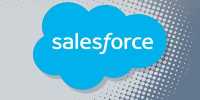Startups with clout among CIOs used to be able to breeze through the procurement process and begin preparing seminars for new clients as soon as contracts were signed. Consumers have become the tail that wags the dog a decade or more into the End User Era. Product-led growth models have gained popularity: rather than spending resources to client acquisition, PLG businesses ship and scale faster and more effectively. They also have a tendency to go public sooner.
PLG titans like Slack and Dropbox carved out their niche by optimizing time-to-value, leveraging data to calibrate client touchpoints, and providing every employee “a common knowledge of the customer’s journey,” says Vidya Raman, a partner at Sorenson Ventures. With TechCrunch+, she revealed her requirements for making product-led activities more effective and sustainable.
“Think in terms of bite-sized experiences,” she advises, “each of which would provide a significant consequence for the consumer.” Her proposals go beyond basic best practices to discuss alignment and collaboration techniques, community-building initiatives, and other PLG tactics. On April 14, I’ll be speaking with Terri Burns, a GV investor and partner, on discovering product-market fit at TC Early Stage. I hope you’ll be able to participate in the discussion!
Many investors lavish praise and attention on entrepreneurs in the outset, only to drift away later. Vijay Chattha and Jay Kapoor, general partners at VSC Ventures, commented, “Based on what our founders informed us, a solid 20% of cap table donors don’t even assist their founders build key contacts.”
Kapoor and Chattha propose replacing pro-rata agreements with performance-based covenants in their demand for industry change. “On a founder’s cap table, a performance-rata clause will look different for each investment. Larger organizations may be able to provide a full range of services, whereas single practitioners and smaller funds may focus on a specific company function such as marketing, sales, design, engineering, or public relations.”
Hiring a seasoned salesperson who is also at ease with the unpredictability that comes with working at a company in its early stages is a big task. “Founders want someone who sees the broad picture, comprehends the business sector, enjoys technology, and, most importantly, asks a lot of questions,” says Andy Stinnes, general partner at Cloud Apps Capital Partners.
As SaaS tools replace conventional on-premise software in the company, a lot of labor has shifted to the cloud. However, while SaaS tools make life easier, the nature of cloud businesses and their data retention policies mean that you, not your cloud provider, are responsible for backing up all data used by those tools in the event of a cyber-attack or failure, as Brian Spanswick, CISO and head of IT at Cohesity, points out. Companies must proactively implement processes to preserve, back up, and recover any data utilized by SaaS technologies within the organization, according to Spanswick. “Relying on the default retention and recovery policies of providers is insufficient.”















